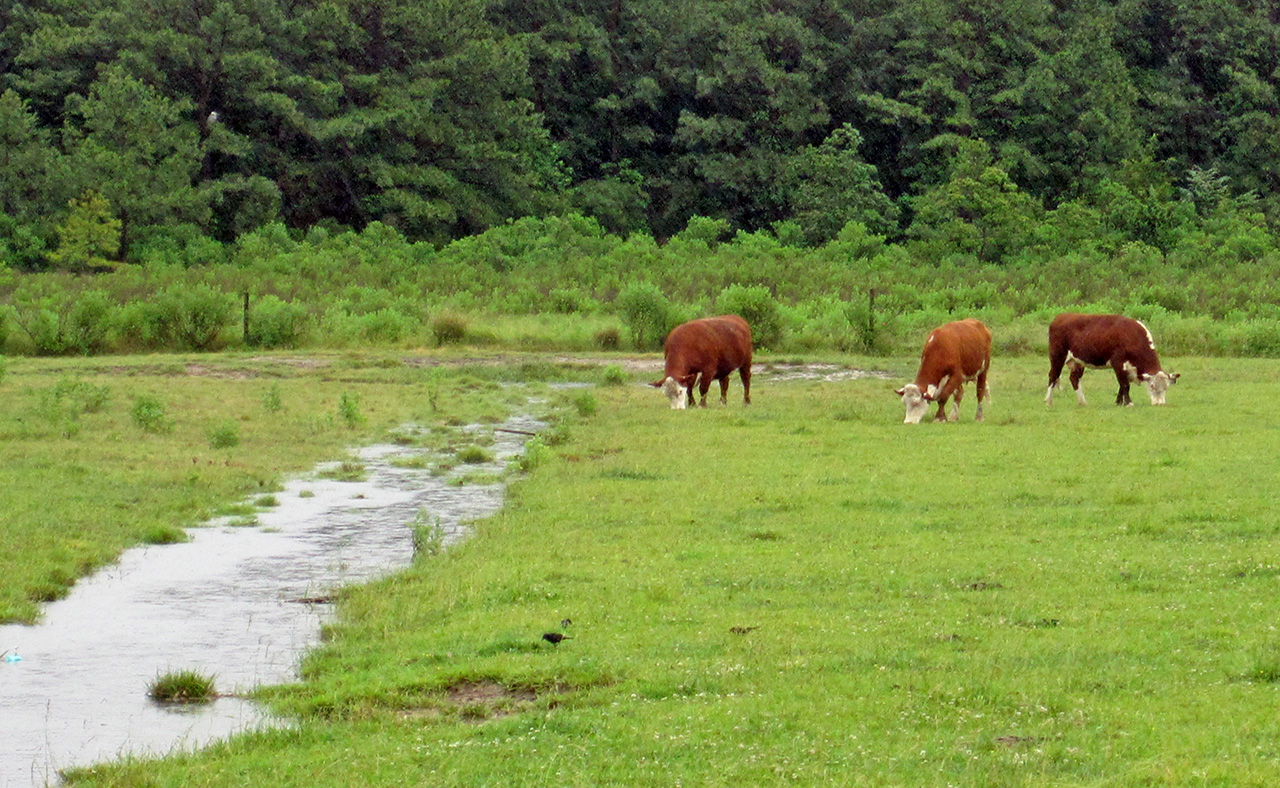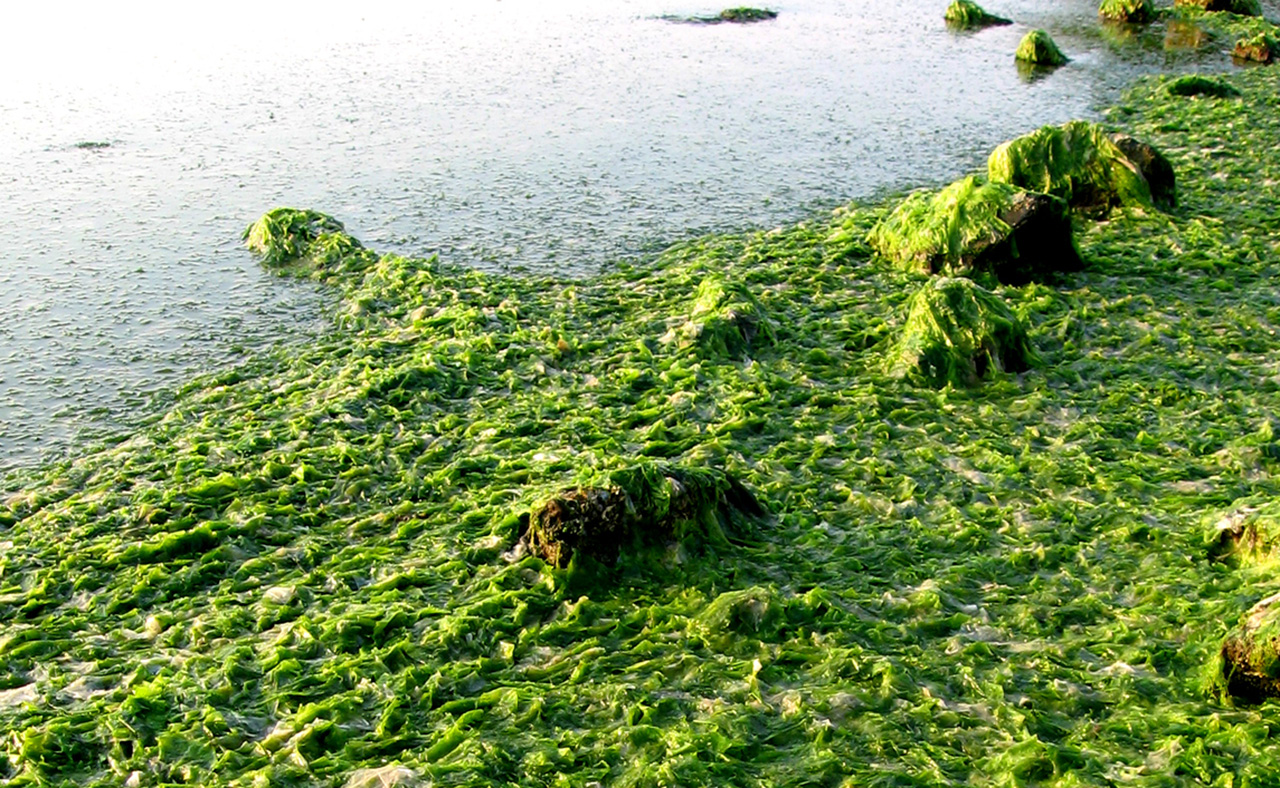Phosphorus has always been a part of the Chesapeake Bay ecosystem
Like nitrogen, phosphorus is an essential nutrient for all plants and animals. But like nitrogen, too much phosphorus in the Bay causes algae to grow in large, dense algal blooms, which depletes oxygen for the fish, crabs, and other marine organisms.
The main source of excess phosphorus in the Chesapeake Bay watershed is agricultural runoff such as animal manure. Other sources include urban and suburban development stormwater runoff, and wastewater treatment plants. Source: Chesapeake Bay Program.

Unrestricted grazing next to a drainage ditch can negatively affect water quality and stream habitat.

Too many nutrients such as phosphorus in the Bay create large mats of floating algae, preventing sunlight from penetrating the water.
- 2013
- 2012
- 2011
- 2010
- 2009
- 2008
- 2007
- 2006
- 2005
- 2004
- 2003
- 2002
- 2001
- 2000
- 1999
- 1998
- 1997
- 1996
- 1995
- 1994
- 1993
- 1992
- 1991
- 1990
- 1989
- 1988
- 1987
- 1986
No story for this year